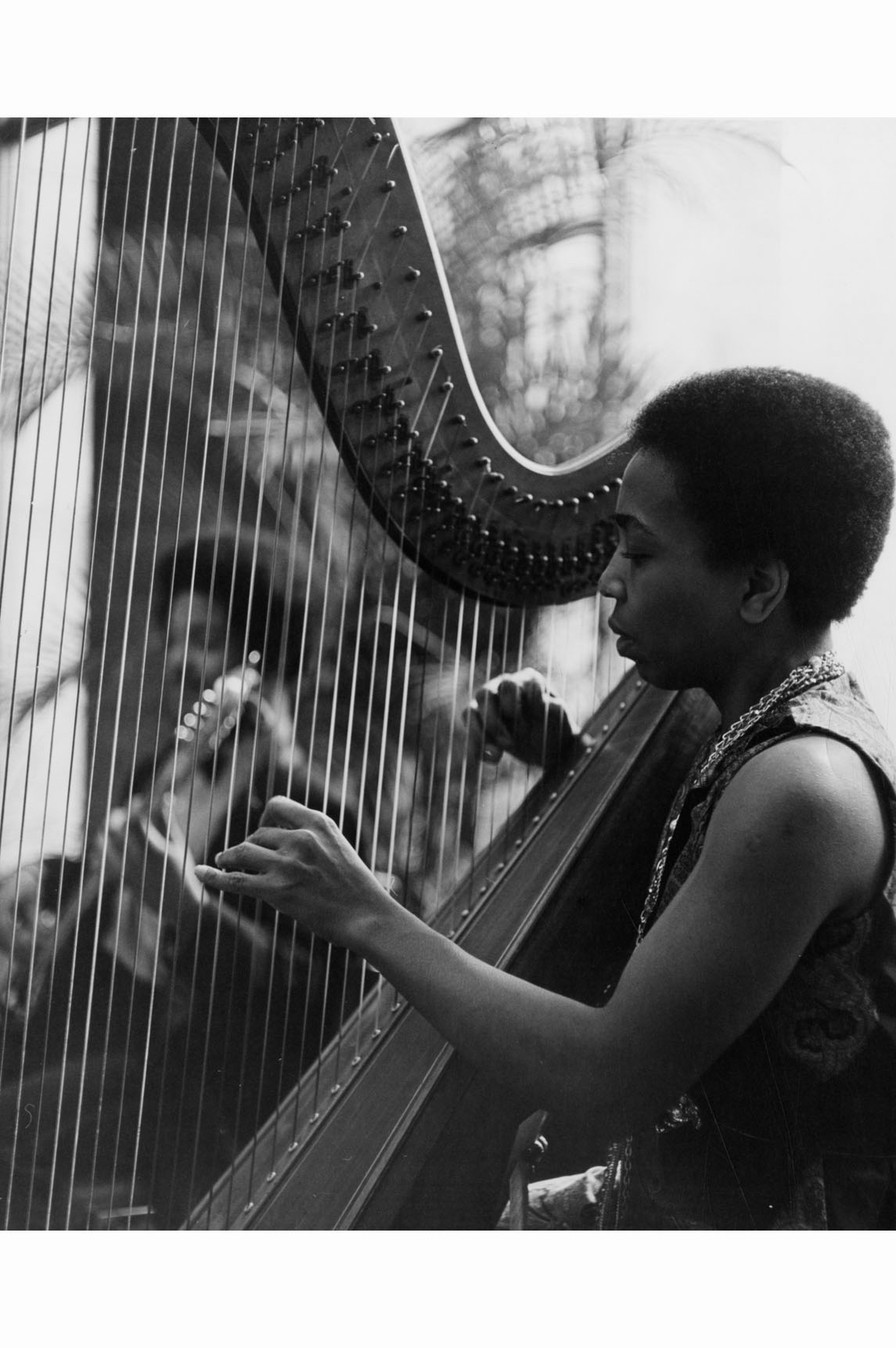Startseite › Foren › Über Bands, Solokünstler und Genres › Eine Frage des Stils › Blue Note – das Jazzforum › blindfoldtest #24 – vorgarten › Antwort auf: blindfoldtest #24 – vorgarten
#14
:format(jpeg):mode_rgb():quality(90)/discogs-images/R-490285-1379429844-5525.jpeg.jpg)
dorothy ashby: moving finger
the rubaiyat of dorothy ashby.
dorothy ashby (koto, voc), stu katz (vib), cliff davis (as), fred katz (kalimba), lenny druss (fl), cash mccall (g), ? (b), ? (dm), richard evans (arr).
cadet records. original compositions inspired by the words of omar khayyam. recorded at ter-mar studios, chicago, november 1969 – january 1970.
hip shit vom ex-arkestra-bassisten richard evans mit dorothy ashby, davon gab es drei alben, das hier ist aber das durchgeknallteste und schönste. ashby hat viele tolle sachen gemacht, auch im traditionelleren bereich. aber es war immer irgendwie eigen und kein jazz. es kommt aber sehr viel persönlichkeit hindurch. und ich brauchte noch ein bisschen anfang-70er coolness und experimentierlust. (und dass das noch alles ein mystisches material zur grundlage hat, wundert jetzt auch nicht.)
richard evans (donny hathaway, marlena shaw, terry callier, soulful strings) hier über die zusammenarbeit:
Where did you first hear Dorothy Ashby, and when did you know you wanted to work with her?
It was 1962, and I was in New York negotiating with John Hammond, and we were about to watch Ella Fitzgerald. I decided to run to this bar next door, and when I came back, there was this beautiful Black lady with a bass and harp, and I thought I had died and gone to heaven. She really amazed me. I went up to her and told her I really enjoyed her stuff.
In 1966 or so, I went to Detroit to watch [singer/guitarist] Frank D’Rone. When I went to dinner, I saw Dorothy again playing with another trio at the restaurant I was meeting Frank at. Right then, I asked her if she had a record deal. She said no, and I asked her if she wanted one, and that was it. Then we did Afro-Harping right after.
From Dorothy’s first LPs to Afro-Harping and The Rubaiyat of Dorothy Ashby on Cadet, the sound changed from straightahead jazz to a very vibey, almost cinematic soul with jazz flourishes. What inspired you to take Dorothy’s recording aesthetic to these new realms?
Her jazz playing was very New York-ish, very sophisticated. But I wanted things to be very Black, very funky at Cadet. She had a lot of pentatonic scales and stuff, but I wanted a swing. She was an expert on the harp and did things very instinctively. I think she just wanted to please me, and that’s why those recordings are different. By the time we cut her last record, it was very artistic. I thought it was gonna sell five copies. [laughs] But after those three albums with her, I had to use her anytime I needed a harp player.
Did you keep in touch with Dorothy in her later years?No, we didn’t really keep in touch. But I do remember her as a very modest person. She always had a very self-acquired peace about her. Her manner was very gentle.

dorothy ashby
1930-86.
home church: detroit.
als harfenistin im jazz kaum ernstgenommen, später für hip-produktionen („afro harping“) eingesetzt.
seit 1952 professionelle jazzharfenistin. eigene radioshow. mit ihrem mann sam ashby theaterproduktionen (ashby players). THE RUBAIYAT ist eine ambitionierte würdigung von omar khadyyam, einem persischen mathematiker und dichter aus dem 11./12. jahrhundert, der sich kritisch mit dem islam auseinandersetzte.
--